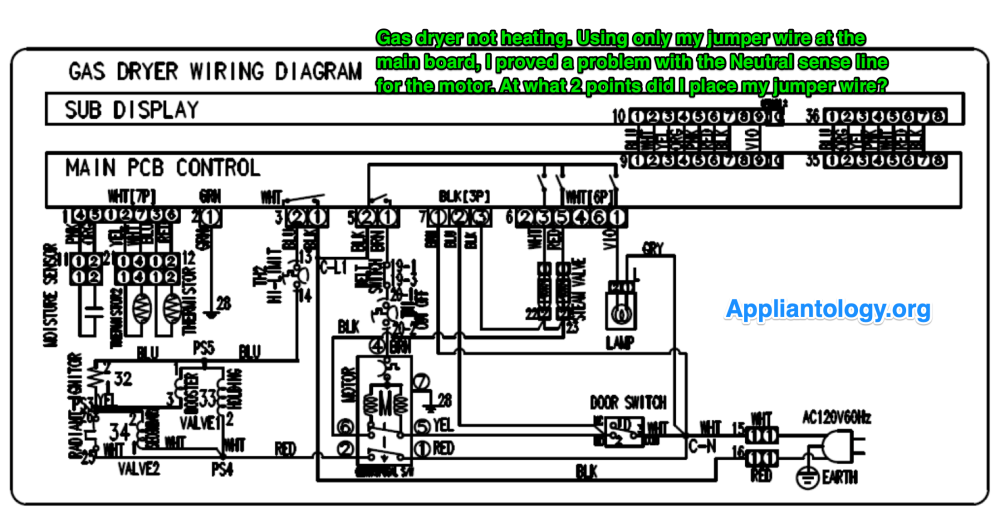Problem: I'm on a gas dryer service call-- no heat complaint.
Solution: Using only my jumper wire at the main board, I proved a problem with the Neutral sense line from the motor and made the burner fire up.
Question: At what two points did I place my jumper wire to troubleshoot this problem?


26 Comments
Recommended Comments